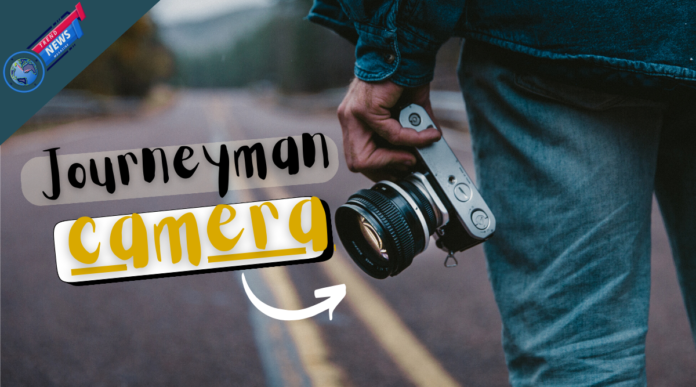The Journeyman Camera brand has long been a luminary in the realm of photographic apparatus. Celebrated for its superlative quality and unceasing innovations, it has become the quintessential choice for shutterbugs. This treatise will elucidate the history, pivotal functionalities, advantages, and assorted types of Journeyman cameras, aiding you in selecting the perfect one.
History of Journeyman Camera
Incepted in 1977, Journeyman Camera emerged from a consortium of photographers dedicated to crafting high-caliber lenses and camera accouterments. Initially concentrating on lens production, they subsequently broadened their horizons to include the development of their own DSLR, mirror less, and action cameras.
Features and Specifications
Journeyman cameras are lauded for their exceptional image quality, durability, and user-friendly interfaces. They encompass a spectrum of products, including DSLR, mirrorless, and action cameras, each with distinct attributes.
Sensor Size
Sensor size is paramount for image quality. Full-frame sensors yield superior image quality, a shallower depth of field, and enhanced performance in low light. Crop sensors, being smaller and more economical, are suitable for general use and online sharing.
Resolution
Resolution, meant in megapixels (MP), effects image quality. A higher MP count is advantageous for printing large images and complicated cropping, while a lower MP count suffices for web usage and casual photography.
Lens Compatibility
Journeyman cameras proffer an array of lenses. Variable focal length lenses offer versatility, while fixed focus lenses are lightweight and manageable. Safeguarding lens compatibility with your camera scheme is vital.
Autofocus and Image Stabilization
Autofocus and image stabilization are indispensable for achieving sharp images. Journeyman cameras employ sophisticated autofocus systems and both optical and electronic image stabilization to diminish camera shake and blur.
Video Capabilities
Journeyman cameras boast impressive video capabilities. They support 4K resolution for detailed, cinematic videos and various frame rates for fluid motion.
Advantages of Journeyman Cameras
Journeyman cameras confer numerous advantages:
- High-quality images with exceptional color fidelity and minimal noise.
- Robust and weather-resistant constructions.
- Intuitive and user-friendly interfaces.
Camera Types
DSLR Camera

A DSLR camera uses a mirror mechanism to reflect light from the camera’s lens up into an optical viewfinder. This mirror mechanism allows you to see exactly what the camera sees, providing a real-time view of your subject.
Advantages
DSLR cameras are renowned for their exceptional image quality, facilitated by large sensors and precise optics. They offer versatility through interchangeable lenses, allowing photographers to adapt to various shooting conditions effortlessly. Manual controls provide professionals and enthusiasts alike with the ability to fine-tune settings for optimal results. The optical viewfinder offers a direct, real-time view of the scene, which many photographers prefer for its accuracy and clarity.
Disadvantages
Despite their imaging prowess, DSLR cameras tend to be bulky and heavy, which can be cumbersome during extended shoots or travel. The mechanical movement of the mirror inside the camera, known as mirror slap, can sometimes cause slight vibrations that impact image sharpness, especially at slower shutter speeds. In terms of video capabilities, DSLRs traditionally offer limited features compared to mirrorless counterparts, making them less suited for dedicated videography.
Best For
DSLR cameras excel in specific photography genres where image quality, flexibility, and manual control are paramount:
- Professional Photography: Ideal for professionals who require uncompromising image quality and extensive customization options.
- Landscape and Portrait Photography: Well-suited for capturing detailed landscapes and nuanced portraits with precise control over depth of field and focus.
- Studio Photography: Preferred in studio environments where control over lighting and composition is critical for producing high-quality images.
- Wildlife Photography: Their robust build and powerful telephoto lenses make DSLRs essential for capturing wildlife behavior and distant subjects with clarity.
DSLR cameras remain a cornerstone of photography, valued for their superior image quality, lens versatility, and manual control capabilities, making them a preferred choice among serious photographers across various disciplines.
Mirrorless Cameras

Mirrorless cameras, a hallmark of modern photography, combine innovation with versatility to cater to diverse photographic needs.
Advantages
Compact and lightweight, mirrorless cameras are the go-to choice for photographers on the move, offering portability without sacrificing quality. They boast rapid autofocus capabilities, ensuring quick and precise focus even in dynamic shooting situations. Enhanced video capabilities make them a favorite among videographers, delivering superior video quality and advanced filming features. The inclusion of an electronic viewfinder enhances user experience by providing real-time exposure previews and accurate composition of shots.
Disadvantages
Despite their advantages, mirrorless cameras do come with some drawbacks. They typically have a shorter battery life compared to DSLRs, necessitating frequent recharging during extended shoots. The range of available lenses for mirrorless cameras is more limited compared to DSLRs, potentially restricting options for creative photography. Additionally, the electronic shutter used in mirrorless cameras can induce a rolling shutter effect, which may distort fast-moving subjects in video recordings.
Best For
Mirrorless cameras excel in various photography genres:
- Travel and Street Photography: Their compact size and high performance make them ideal for capturing moments on the go.
- Sports and Action Photography: Rapid autofocus and burst shooting capabilities enable photographers to capture fast-paced action with precision.
- Vlogging and Video Production: Enhanced video features cater to content creators seeking professional-quality footage.
- Astrophotography: Mirrorless cameras’ low-light performance and adaptability to different lenses make them suitable for capturing celestial wonders.
Mirrorless cameras continue to evolve, offering photographers and videographers alike a compelling blend of innovation, portability, and advanced imaging technology.
Point-and-Shoot Cameras

Journeyman’s point-and-shoot cameras exemplify convenience and ease, tailored for those desiring a harmonious blend of simplicity and respectable image quality.
Advantages
- Compact and Portable: Effortlessly portable, ideal for impromptu photography and travel.
- User-Friendly: Engineered for intuitive use, even for novices.
- Affordable: Cost-effective without sacrificing essential features.
- Adequate Image Quality: Sufficient for general photography needs and casual usage.
Disadvantages
- Limited Manual Controls: Provides minimal customization, limiting advanced photographic techniques.
- Small Sensor Size: Diminishes image quality, particularly in low-light or detail-intensive scenarios.
- Limited Lens Selection: Fixed lenses constrain versatility across different shooting conditions.
- Subpar Low-Light Performance: Struggles with clarity in dimly lit environments.
Best For
- Casual Photography: Perfect for those who relish capturing moments without the complexity of advanced settings.
- Everyday Snapshots: Ideal for recording daily life and spontaneous memories.
- Social Media Photography: Provides satisfactory quality for sharing images on social platforms.
- Family Events: Excellent for documenting family gatherings, celebrations, and special occasions.
Crafted with simplicity in mind, Journeyman’s point-and-shoot cameras offer a dependable, budget-friendly solution for everyday photography needs, making them a perfect companion for capturing life’s everyday moments.
Action Cameras
Journeyman’s action cameras are crafted for adrenaline junkies and explorers. These petite yet robust devices are acclaimed for their resilience and adaptability.
Advantages
- Compact and Hardy: Ideal for capturing intense activities.
- Waterproof and Shockproof: Perfect for harsh conditions, whether underwater or rugged terrains.
- Wide-Angle Lens: Encompasses broad vistas, ensuring no moment is missed.
- High-Quality Video: Delivers sharp and clear footage, suitable for dynamic recordings.
Disadvantages
- Limited Manual Adjustments: May constrain experienced users desiring more control.
- Modest Sensor Size: Can compromise image quality, especially in detailed shots.
- Subpar Low-Light Performance: Fights in softly lit locations.
- Limited Image Quality: Not comparable to larger, more advanced cameras.
Best For
- Adventure and Sports Photography: Capture the exhilaration of the moment, from mountain biking to snowboarding.
- First-Person Perspective Photography: Perfect for creating immersive videos from your vantage point.
- Underwater Photography: Effortlessly document aquatic adventures.
- Drone Photography: Lightweight and compact, ideal for drone-mounted aerial shots.
Journeyman’s action cameras are designed for those who need a resilient, adaptable, and user-friendly device to capture their most daring adventures.
Conclusion
Journeyman Camera stands as a preeminent brand in the photographic industry, revered for its quality and innovation. By grasping the features and types of Journeyman cameras, you can select the one that best meets your requirements and capture remarkable images. With an extensive range of products, Journeyman Camera is the quintessential choice for every photographer.




